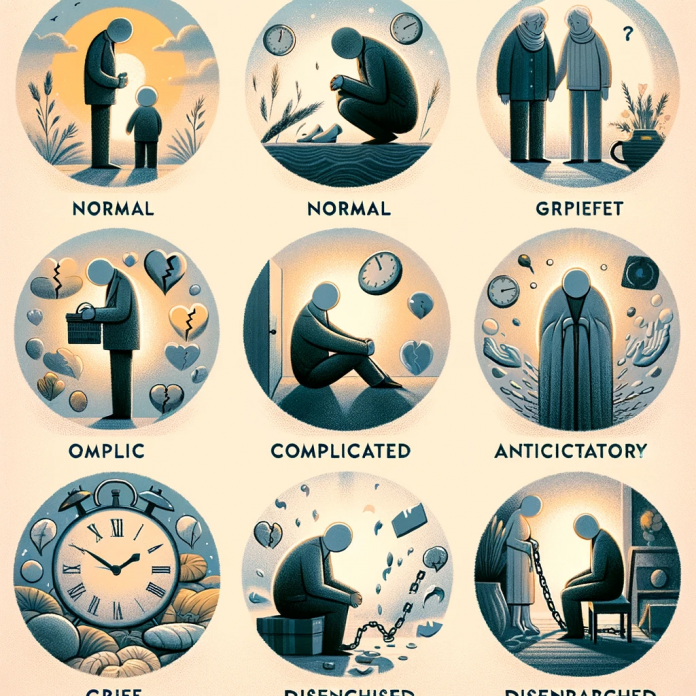Grief and mourning are universal experiences that touch everyone at some point in their lives. Yet, despite their universality, these experiences are highly personal and can vary greatly from person to person. Understanding the different types of grief and mourning can provide insight into our own experiences and help us support others in their times of sorrow.
The Nature of Grief and Mourning
Grief is a natural response to loss. It's the emotional suffering one feels when something or someone the individual loves is taken away. Grief can be triggered by the death of a loved one, but it can also be caused by other types of loss such as divorce, job loss, or serious illness.
Mourning, on the other hand, is the outward expression of grief. It includes rituals that help a bereaved person make sense of their loss and continue with their life. Mourning practices can vary greatly across different cultures and religions.
Types of Grief
There are several types of grief, each with its own characteristics and ways of manifesting. Understanding these types can help individuals and their loved ones navigate the grieving process more effectively.
- Normal Grief: This is the most common type of grief. It involves a range of feelings, including sadness, anger, and disbelief. Although painful, normal grief is a healthy response to loss.
- Complicated Grief: Also known as persistent complex bereavement disorder, this type of grief is characterized by an intense, prolonged mourning that interferes with a person's ability to function in daily life.
- Anticipatory Grief: This type of grief occurs before an impending loss. It is common among those who have a terminally ill loved one.
- Disenfranchised Grief: This type of grief occurs when a person's loss is not socially recognized or validated, such as the loss of a pet or a non-traditional relationship.
Stages of Grief
Understanding the stages of grief can provide a roadmap for the grieving process. However, it's important to remember that not everyone will go through all stages, and they may not occur in a linear fashion.
- Denial: This is a defense mechanism that helps us survive the loss. In this stage, the world may seem meaningless and overwhelming.
- Anger: As the masking effects of denial start to wear, reality and its pain re-emerge. The intense emotion is deflected from our vulnerable core and redirected as anger.
- Bargaining: During this stage, we dwell on what we could've done to prevent the loss. Guilt often accompanies bargaining.
- Depression: This is a sort of acceptance with emotional attachment. It's natural to feel sadness and regret, fear, uncertainty, etc. It shows that the person has at least begun to accept the reality.
- Acceptance: This is not a period of happiness, but rather an acceptance of the reality of the loss and a readiness to move forward with life.
Coping with Grief and Mourning
Everyone copes with grief and mourning in their own way. There is no right or wrong way to grieve, and each person's journey through grief is unique. However, there are some strategies that can help individuals navigate their grief more effectively.
One of the most important aspects of coping with grief is to allow oneself to experience the pain. Trying to avoid or suppress the pain only prolongs the grieving process. It's important to be patient with oneself and allow the grieving process to naturally unfold.
Seeking Support
Support from others can be a crucial part of the grieving process. This can come from friends and family, a grief counselor, or a support group. Sharing one's feelings with others can help alleviate some of the burden of grief.
Support groups, in particular, can be very beneficial. They provide a safe space to share experiences and feelings, and the opportunity to learn from others who are going through the same process.
Self-Care
Self-care is another important aspect of coping with grief. This includes taking care of one's physical health, getting enough sleep, eating a healthy diet, and engaging in regular physical activity. It also involves taking care of one's mental health, such as practicing mindfulness or other forms of meditation.
Engaging in activities that one enjoys can also be a form of self-care. This can provide a distraction from the pain of grief, and can also help individuals reconnect with their sense of self.
Conclusion
Understanding the different types of grief and mourning can help individuals navigate their own experiences of loss. It can also provide insight into the experiences of others, enabling us to provide support and understanding in their times of sorrow. While grief can be a deeply painful experience, it is also a testament to our capacity for love, and a reminder of the importance of cherishing our relationships while we can.


-banner.png)





